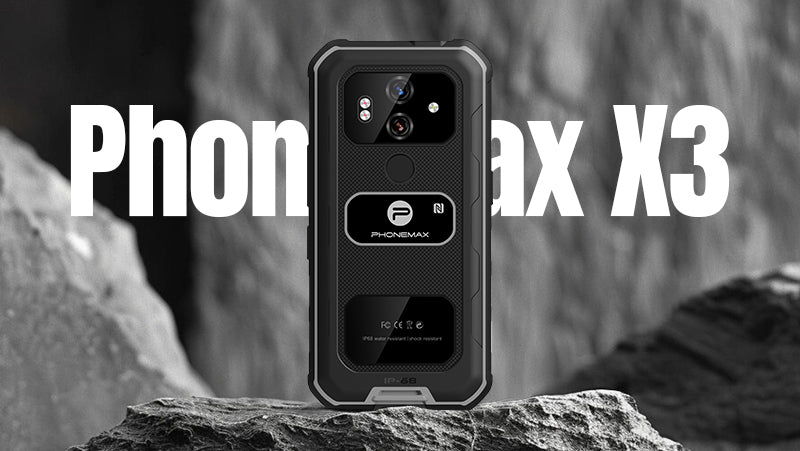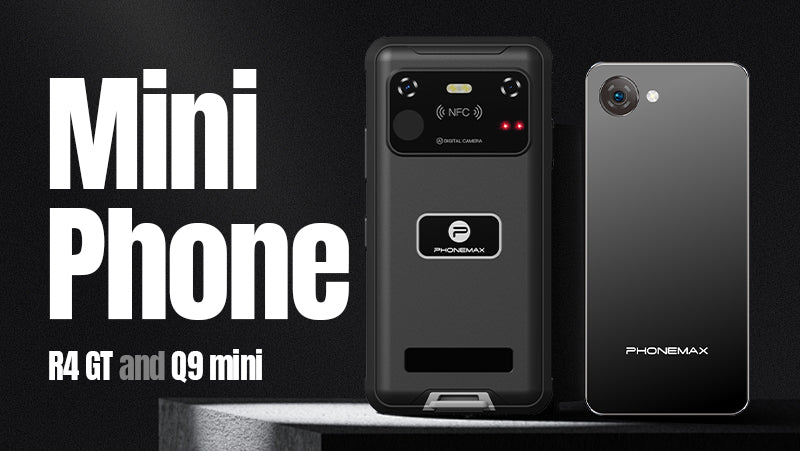In the competitive smartphone market, the Phonemax X3 stands out with its outstanding rugged features and dual-frequency GPS positioning technology. For outdoor enthusiasts, adventurers, and users requiring high-precision positioning, the Phonemax X3 is undoubtedly the ideal choice.
Robust Rugged Performance
The Phonemax X3 is a rugged smartphone designed to be dustproof, waterproof, and shockproof. Whether in harsh outdoor environments or accidental drops, the Phonemax X3 ensures normal operation. This phone has undergone rigorous testing and meets the IP68 protection rating standards, meaning it can be submerged in water up to 1.5 meters deep for 30 minutes and is completely dustproof.
Dual-Frequency GPS Positioning: Ensuring Precise Navigation
One of the key selling points of the Phonemax X3 is its dual-frequency GPS positioning feature. Traditional single-frequency GPS positioning can sometimes be affected by environmental interference, leading to inaccurate positioning. Dual-frequency GPS, however, uses both L1 and L5 frequency signals simultaneously, greatly enhancing positioning accuracy. This is especially beneficial in complex environments such as urban canyons or deep valleys, where dual-frequency GPS can determine locations more quickly and accurately.
Exceptional Performance Configuration
In addition to its excellent rugged and positioning features, the Phonemax X3 also excels in performance. It is equipped with a powerful processor and a large-capacity battery, ensuring long-lasting and efficient operation. The high-definition camera and large screen design further meet users' high demands for photography and viewing.
Recommended Use Scenarios
The Phonemax X3 is particularly suitable for outdoor adventures, mountaineering, and hiking. For those who frequently work in the wild, such as geological surveyors or forest rangers, the dual-frequency GPS positioning and rugged features of the Phonemax X3 are indispensable tools.
Working Principle of Dual-Frequency GPS Positioning
Dual-frequency GPS positioning uses two different frequency GPS signals, typically the L1 and L5 bands. This technology enhances positioning accuracy and reliability by receiving and processing dual-frequency signals from multiple satellites. Here’s a detailed explanation of how dual-frequency GPS positioning works:
1. Transmission of GPS Signals
The Global Positioning System (GPS) consists of 24 satellites that continuously transmit positioning signals to Earth. Each satellite emits two different frequency signals: the L1 band (1575.42 MHz) and the L5 band (1176.45 MHz). These signals contain precise timestamps and satellite position data.
2. Signal Reception and Processing
A dual-frequency GPS receiver can simultaneously receive signals from both the L1 and L5 bands. The built-in antenna of the receiver captures these signals and transmits them to the internal processor. The processor then decodes the timestamps and position data from the signals.
3. Correction of Multipath Effects and Ionospheric Errors
Traditional single-frequency GPS signals can be affected by multipath effects (signals being reflected by buildings, the ground, etc.) and ionospheric errors (the ionosphere affecting the signal propagation speed), leading to positioning errors.
Dual-frequency GPS can effectively correct these errors by receiving both L1 and L5 signals simultaneously. Since L1 and L5 signals travel at different speeds through the ionosphere, the receiver can calculate and correct the ionospheric delay error by comparing the propagation time differences of the two signals. Additionally, dual-frequency signals better handle multipath effects, enhancing positioning accuracy.
4. Triangulation Positioning
The receiver uses dual-frequency signals from multiple satellites to calculate its position through triangulation. Specifically, the receiver calculates the distance to each satellite based on the time difference of signal arrival and then determines the exact position using geometric algorithms combined with the known positions of the satellites.
5. Data Fusion and Improved Positioning Accuracy
Dual-frequency GPS receivers typically integrate data from other sensors, such as accelerometers, gyroscopes, and barometers, to further enhance positioning accuracy and reliability. This data fusion technique allows dual-frequency GPS positioning to provide higher precision and stability in various environments.
Conclusion
Dual-frequency GPS positioning technology improves the correction of ionospheric errors and multipath effects by utilizing two different frequency signals, significantly enhancing positioning accuracy and reliability. The Phonemax X3, leveraging this advanced technology, becomes the ideal choice for outdoor adventures and users requiring high-precision positioning.




Laisser un commentaire
Tous les commentaires sont modérés avant d'être publiés.
Ce site est protégé par hCaptcha, et la Politique de confidentialité et les Conditions de service de hCaptcha s’appliquent.